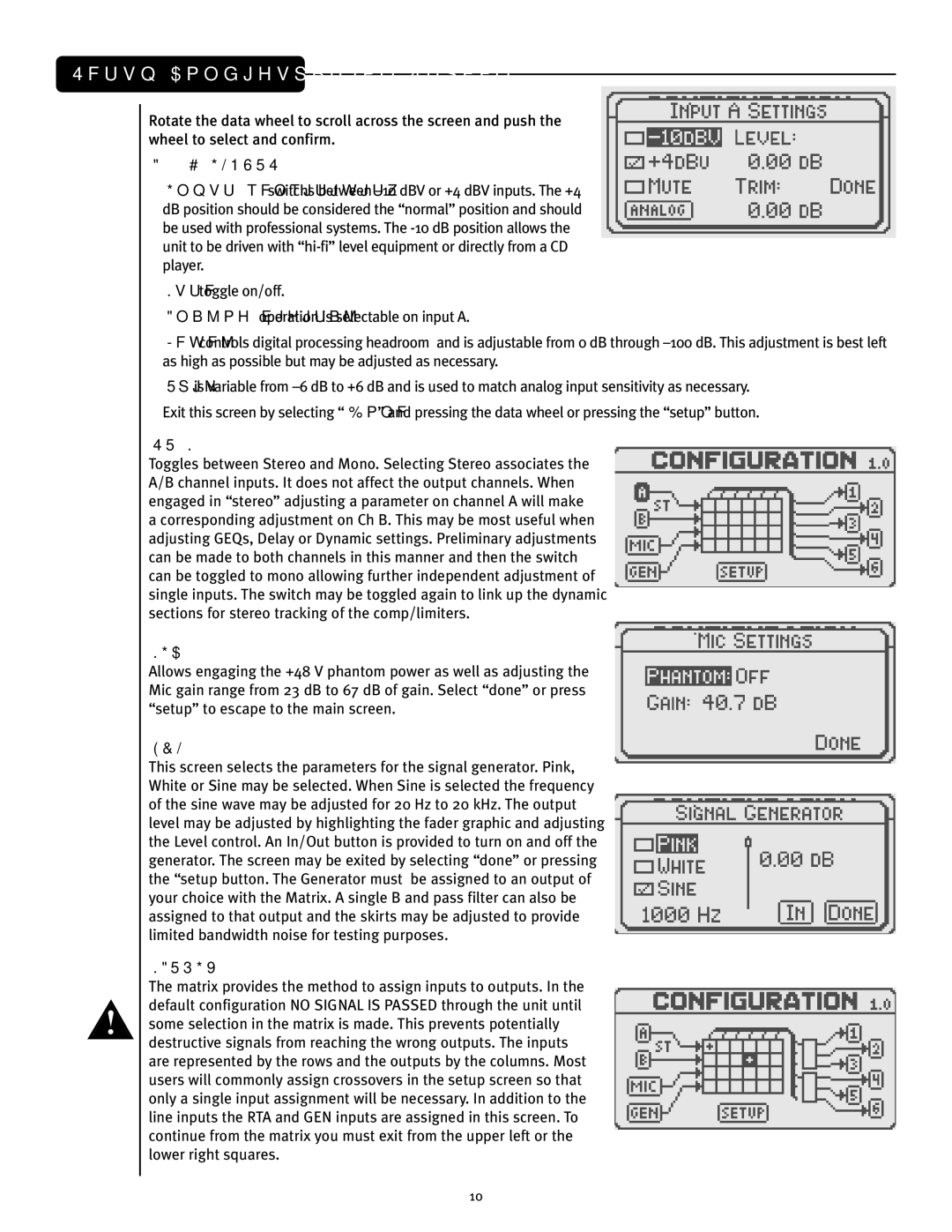VSX 26 specifications
The Peavey VSX series, encompassing the VSX 26, VSX 48, and the VR112 loudspeaker, is designed to meet the demands of modern sound reinforcement with advanced features and innovative technologies. These products are widely regarded for their reliability and versatility, making them suitable for both live performance and installation applications.The VSX 26 is a versatile digital signal processor (DSP) that offers 26 inputs and 12 outputs, making it ideal for complex audio setups. This unit features 24-bit/96 kHz audio processing, ensuring high fidelity and clarity for all audio signals. It employs sophisticated algorithms for crossover configuration, equalization, and delay, providing users with the tools necessary to optimize sound environments. Additionally, the VSX 26 features a user-friendly interface, including an LCD screen for easy navigation and monitoring of audio settings.
Next in the series, the VSX 48 elevates the capabilities of the previous model by offering 48 inputs and 24 outputs, combined with advanced processing power. This DSP unit is perfect for larger audio systems, allowing for intricate routing and mixing configurations. It also provides multiple processing functions, including parametric equalizers and dynamic range control, empowering sound engineers to shape the audio signal with unmatched precision. The integration of Peavey’s patented SmartD damping circuit enhances sound quality by minimizing crossover distortion, ensuring a clean and powerful output.
The VR112 is a powerful 12-inch two-way loudspeaker that perfectly complements the VSX DSP series. Boasting a robust design, it features a 12-inch heavy-duty woofer with a 1.4-inch titanium compression driver that delivers clear and articulate high-frequency response. The VR112 is engineered for durability, with a rugged cabinet design that can withstand the rigors of touring and live performances. Its wide dispersion pattern ensures that sound is evenly distributed across large areas, making it an ideal choice for both indoor and outdoor events.
All models in the Peavey VSX series incorporate unique technologies that enhance the performance and reliability of audio systems. With their powerful DSP capabilities, superior build quality, and a commitment to sound excellence, the VSX 26, VSX 48, and VR112 loudspeakers are reliable choices for audio professionals looking to elevate their sound productions. Whether for large venues, concerts, or installations, Peavey’s engineering excellence ensures superior performance and lasting quality.

